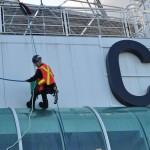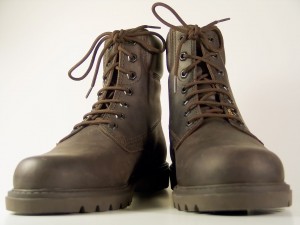How to Avoid Workplace Slips, Trips & Falls

It can happen to the best of us. A momentary lapse in attention in the workplace can lead to a nasty slip, trip, or fall. Taking a tumble at work might not seem like such a big deal, but the statistics surrounding these incidents suggest that employees aren’t as educated as they could be when it comes to safe working practices.
The Statistics
According to the United States Department of Labor, slips, trips, and falls make up the majority of workplace accidents. This equals out to approximately 25% of all reported injury claims each year and 65% of all work days lost. While OSHA sets standards for walking/working surfaces for most permanent job sites, they do not apply to places where only mining, agricultural, or domestic work is done. Not to mention, it’s always possible for an employer to fail to uphold the standards set forth by OSHA.
In such situations, it’s up to the employee to protect him or herself while moving around in the workplace and to always be aware of the environment. Most often, hazardous situations are created when floors are wet or greasy, uneven, cluttered, sloped, etc. Weather and footwear can play a big role as well.
Clean Up
If your workspace tends to be cluttered, you’re at an even greater risk than usual for tripping and hurting yourself. Typically, a messier facility sees many more injuries, regulatory citations, and higher insurance costs than facilities than practice good housekeeping. A well-organized, tidy facility is safer to navigate and reflects positively upon the company’s safety standards.
The secret to exceptional housekeeping revolves around establishing a routine. It should be a part of every employee’s workday. Delegate cleaning responsibilities, making sure everyone knows what’s expected of them. Those responsibilities should become a routine part of your day.
Be Mindful of Hazardous Surfaces
Wet and damaged or uneven walking surfaces are a common cause for falling or tripping at work. Parking lots, sidewalks, or areas where water is frequently spilled can become dangerous when not maintained properly. It’s imperative to always be aware of your surroundings’ conditions and to be an advocate of safe walking surfaces.
For example, does your place of work take appropriate measures in the event of snow or ice? Are the sidewalks and parking lots properly treated to help employees and visitors avoid injury? Inside, spills should be mopped up immediately and “Wet Floor” signs placed as needed so others know to be careful navigating the area. Look for moisture-absorbent rugs and mats at the entrance to your facility and in areas where spills are likely to take place.
Report any damaged walking surfaces inside and outside. Uneven sidewalks can trip anyone up, as well as loose carpeting or damaged steps.
Keep Areas Well Lit and Free of Clutter
Dim, cluttered areas make it easy for people to trip and injure themselves. Always make sure aisles, hallways, entrances, and stairwells are free of debris, equipment, cords or cables, etc. Make it part of your clean up routine to put everything in its place rather than letting it sit out in the open for someone to stumble over. Also make sure these areas are brightly illuminated so anyone can easily get around, with easily accessible light switches and absolutely no obstacles littering the floor.
Proper Footwear

Wearing the right shoes is critical when it comes to workplace safety. Anytime an injury occurs onsite, the employee’s footwear is evaluated to determine if it had anything to do with the incident. Depending on where you work, it’s likely that there are already some rules in place about what sort of shoes to wear (closed toed, flat, etc.). However, be sure to take the sole into consideration also.
A flat, slick sole grants you no traction when moving around, even less so if the area happens to be slippery due to rain, ice, or spills. Pick up a pair of proper shoes with plenty of traction that won’t cause you to slide around on slick floors.
Take any and all precautions to prevent slipping, tripping, or falling in the workplace. Because these injuries account for so many reported claims annually, it is clear that even a brief lapse in attention or the tiniest degree of carelessness can result in a serious incident. While employers are legally required to provide their employees with a safe working environment, each individual should be willing and ready to protect him or herself against injury.
